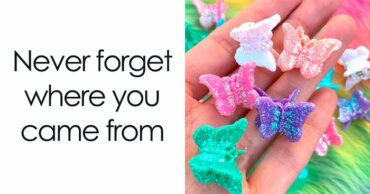
Put aside all notions that Great Yellowstone Thaw is just an average nature show. Think again. It’s much, much more than average. Regardless of whether you’ve been there before, you’ll want to see this three-part PBS series about the first national park ever established in the world. Why? Because you’ll see wondrous things you’ve never seen before. More than that, there is a magic about this show which will fill you with awe. Oh, yes… the kind of awe that has made awesome a commonplace word in the English language…but, filled with the sense of wonder and respect for great and magical things it has lost in everyday use.
You see, Yellowstone was established in 1872, and it has millions of visitors who’ve come every year to see its geysers, mud pots, and hot springs. There are plenty of diverse activities, too, such as watching the wildlife, camping, hiking, fishing, cycling, boating, horseback riding and enjoying picnics. Winter guests can ski, snowshoe, and take guided tours using snow coaches and snowmobiles.
It’s nestled at the northwest corner of Wyoming; touching Idaho and Montana, and it spans more than 2,200,000 acres. Most people visit the park’s grand loop to see the main attractions. Many explore the park’s back country on day or overnight hikes along the additional thousands of trail miles extending out into the park. From Old Faithful geyser to the Lower Falls, there is much to enjoy.
The park is huge. That’s why it’s common to visit Yellowstone, but yearn to see more. This is where Great Yellowstone Thaw shines. The series accesses the skills of expert photographers and wildlife scientists with years of experience in their specialties to tell how the Earth’s intense seasonal changes are impacting the lives of park animals. The teams provide intimate glimpses into the places deep inside Yellowstone where most never go. Working with Dr. Kirk Johnson, renowned author and paleontologist from Smithsonian National Museum of Natural History, the experts show viewers how animals are struggling to survive as climate change disrupts hibernation, hunting, and food supply patterns.
Great Yellowstone Thaw is simply stunning, and not to be missed. Here’s why:
Magical cinematography
The show was filmed over the months from deepest winter to the early summer. It features events in the natural habitats of beavers, bison, great grey owls, grizzly bears, and wolves. Expert photographers capture these animals, and more, with up close views rarely seen; even by the professionals. Witnessing how these creatures live, and the spectacular beauty of Yellowstone’s least explored areas is nothing less than magical.
Expert, passionate guides leading intelligent and passionate explorations
Dr. Kirk Johnson heads a team of more than 400 employees and oversees the largest collection of natural history objects on Earth. He has been the leader of expeditions in 19 states and 11 countries. He’s authored numerous scientific articles and books. He holds a Bachelor of Geology and Fine Art degree from Amherst College. His Master and Doctorate degrees in Geology and Paleobotany were earned at University of Pennsylvania and Yale University, respectively. He’s lectured at M.I.T. and completed postdoctoral university research in South Australia.
Doug Smith, expert wolf biologist, describes how wolves are struggling with less winter snow, as their prey more easily escapes capture. Charlie Hamilton James, follows a pack to examine how one pack manages to keep eleven young wolf pups alive. He also films inside the Elk Refuge.
Casey Anderson, bear expert, follows grizzly bears through all the year’s seasons to learn how bears are surviving the early thaw.
Jeff Hogan, expert nature photographer with over 30-years-experience, films the great grey owls, captures the progress as two adults mate, and shows what happens when two young chicks are born. Owl expert Bryan Bedrosian also lends his extensive knowledge to the team.
The photographers also plant hidden cameras to show what happens at night when bears come to visit, and how animals eat underwater plants when the Snake River thaws. Otters and beavers change their building and hunting patterns, and all is seen in up-close film footage.
Fascinating animal family trivia
Due to the expert team, viewers have the chance to learn interesting facts about Yellowstone’s animal families. One example would be about how Yellowstone’s super volcano draws about 200 bison to the geothermal region on the park’s west side. They enjoy the extra warmth, and forage for grass there. But the volcano emits silica and fluoride, which covers the grass. The silica makes the grass abrasive, which cuts their gums and makes their teeth rough. The high fluoride levels make the bison’s teeth much softer than normal, so the bison lose their teeth much younger than normal.
Iconic aerial photography
It’s all there- scenes of Yellowstone’s super volcano and famous geysers; plus, bald eagles soaring in to steal food, the magnificent great grey owl gliding along with its 5-foot wide wing span, and the highest regions of the mountains as the scientists seek out unique animal behavior.
Glimpses of life as a scientist in Yosemite
Watching these intrepid scientists commute to work on their snowmobiles is the stuff of adventure. Many viewers enjoy snowmobiling, but the idea that it could be possible to pursue a scientific career on a snowmobile is intriguing. These scientists and experts in their fields are men and women who spend much time hunting to gather knowledge. Their searches lead them into areas filled with natural beauty and danger. The evidence they gather is accumulated at a large cost of time, energy and resources, though considerably valuable. Anyone who cares about the natural environment, or seeks to follow in their footsteps, will certainly be caught up in the excitement of their activities.
 Follow Us
Follow Us





